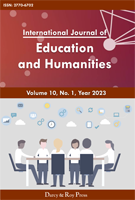Time Series Analysis for Predicting PM2.5 Concentration in Shanghai based on Machine Learning
DOI:
https://doi.org/10.54097/5mbbnd17Keywords:
Time Series Analysis, PM2.5 Prediction, Machine Learning, Model ComparisonAbstract
This study aims to use three different machine learning models -- ARIMA, LSTM and Random Forest -- to predict PM2.5 concentration in Shanghai. By analyzing and comparing the performance of these models in practical applications, we find that each model has its own unique advantages and limitations. The LSTM model performs best in processing complex multivariate time series data, showing high accuracy and excellent data processing capabilities, and its RMSE and MSE indicators are superior to other models. The random forest model excelled in feature importance analysis, providing valuable insights into understanding the drivers of changes in PM2.5 concentration.
Downloads
References
[1] Pan Zhengtong. Predictive Analysis of China's cargo traffic volume based on Machine Learning time series [J]. China Storage and Transportation,2022,(01):85-86.]
[2] Jiang Yuan, Yang Bo, Zhao Donglai, et al. Mobile network traffic prediction technology based on time series analysis and machine learning [J]. Internet of Things Technology, 2019, 10(06):42-45.
[3] FU Zhiou, Zhou Yang, Chen Cheng, et al. [3] Fu Z, Zhou Y, Chen C, et al. Application of time series analysis and machine learning method in predicting the incidence trend of pulmonary tuberculosis [J]. China Health Statistics, 2019,37(02):190-195.
Downloads
Published
Issue
Section
License
Copyright (c) 2024 International Journal of Education and Humanities

This work is licensed under a Creative Commons Attribution 4.0 International License.

















